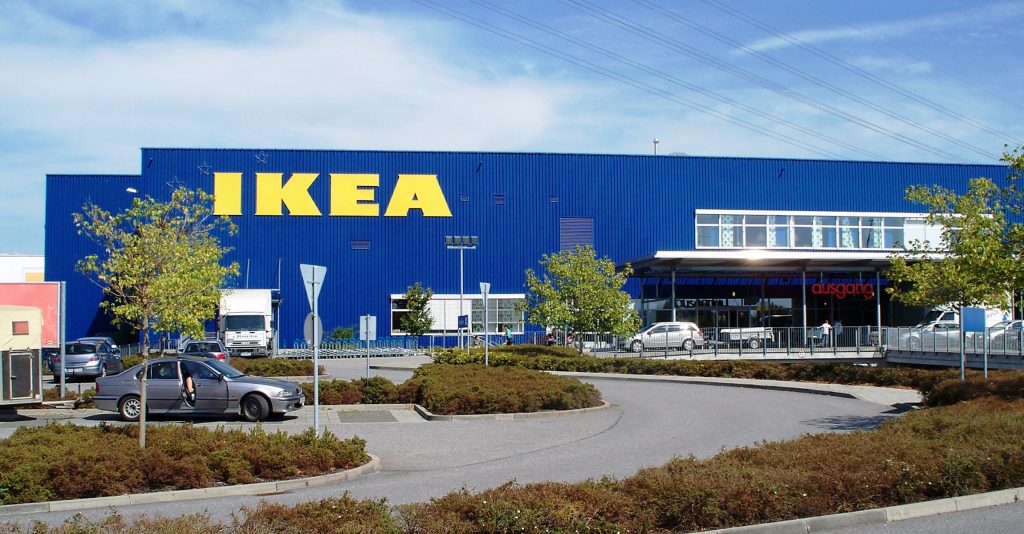
by Fronetics | Feb 1, 2016 | Blog, Strategy, Supply Chain

Reverse logistics presents unique challenges and opportunities. To meet these challenges and take advantage of these opportunities, companies need to be both prepared and flexible.
Ikea, a company known for innovation, is facing the enigma of reverse logistics head on. As part of the company’s sustainability strategy, Ikea is challenging the perception that its products are disposable by creating opportunities to recycle and reuse products.
In a recent interview with Fast Company, Chief Sustainability Officer Steve Howard outlined several of the company’s initiatives. They include programs that allow consumers to return plastics, batteries, furniture, compact fluorescent light bulbs, mattress, and textiles to the store. These items are then sold “as-is” or recycled.
These programs have proven successful. For example, in just a few months, over 6 tons of batteries were collected in Moscow, and 25 tons of used textiles were collected in Norwegian stores last year.
Ikea is looking at other ways it can provide end-to-end supply chain solutions. One idea is to take returned products and recycle them into other products. In his interview with Fast Company, Howard shares: “We would basically be taking old bookshelves, old furniture, or an old door that’s finished its first life and sending it into new products. You’ll have a kitchen that used to be a bookshelf, without seeing any visible difference in them. It’s not a revolution, but you have to actually fundamentally change your supply chain to do that.”
Ikea has recognized that old, broken, and unwanted products are an opportunity. Through these innovative reverse logistics initiatives, Ikea is not only acting in a more sustainable manner and reducing the company’s environmental footprint, it is also increasing engagement with consumers and creating positive economic opportunities for the company.
Similar articles:

by Fronetics | Jan 28, 2016 | Blog, Logistics, Supply Chain
Fronetics names the best of the best blogs in the logistics and supply chain industries.
The logistics and supply chain industries are catching on to how successful a blog can be as part of an inbound marketing strategy. Companies are creating content that not only fuels conversation about industry best practices, trends, and issues, but also helps drive business to their websites.
Fronetics Strategic Advisors conducted a survey in January 2016 to determine the top logistics and supply chain blogs in the industry. Here are the results:

Dallas, TX-based Transplace is a 3PL and technology provider serving manufacturers, retailers, and consumer and chemical packaged goods companies. Logistically Speaking is the company’s thought leadership blog. It tells “the latest and the greatest supply chain and transportation stories” through Infographics, interviews with logistics executives, and informative articles offering information and advice.
Readers love: the weekly “TIP list,” or Transportation Industry’s Progression, which curates a short list of articles concerning trending topics and advancements in the industry
 Transplace’s CEO Tom Sanderson shares information, opinions, and analysis of factors affecting the supply chain — including company economic data, freight transportation regulation and legislation, and carrier and 3PL financial performance. The blog is rich with charts and graphs that offer big-picture insight on what’s going within the industry.
Transplace’s CEO Tom Sanderson shares information, opinions, and analysis of factors affecting the supply chain — including company economic data, freight transportation regulation and legislation, and carrier and 3PL financial performance. The blog is rich with charts and graphs that offer big-picture insight on what’s going within the industry.
Readers love: Sanderson’s no-nonsense breakdown of the most pressing issues facing the supply chain
Jennifer Cortez, Director, Marketing Communications, is thrilled with Transplace being recognized by Fronetics and the industry:
“We are thrilled to be recognized as the top logistics and supply chain blogs in 2015. At Transplace, we pride ourselves on providing timely and relevant content to our customers and the industry. Our goal this year is to further connect Transplace and our thought leaders with emerging industry trends.”
Procurious is a UK-based online business network with news, education, discussion forums, and events for procurement and supply chain professionals. The blog goes beyond industry insights — it’s a savvy guide to career advancement and skill development. Articles are written for the modern-day professional, in sync with Procurious’s forward-thinking brand.
Readers love: original series like Life & Style and #firstmovers, which cover interesting, relevant topics in the procurement world.
Thank you to all who took our survey to find the top logistics and supply chain blogs!
Fronetics Strategic Advisors is a management consulting firm with a focus on inbound marketing. We create and execute successful strategies for growth and value creation. Unlike other firms, our approach is data driven. We know ROI is important, so we track and measure results to drive success. Read about our approach to inbound marketing, or get in touch.

by Fronetics | Jan 14, 2016 | Big Data, Blog, Data/Analytics, Strategy, Supply Chain
 Fronetics Strategic Advisors is a leading management consulting firm. We advise and work with companies on their most critical issues and opportunities: strategy, marketing, organization, talent acquisition, performance management, and M&A support.
Fronetics Strategic Advisors is a leading management consulting firm. We advise and work with companies on their most critical issues and opportunities: strategy, marketing, organization, talent acquisition, performance management, and M&A support.
We’ve gathered our most-read big data articles of 2015:
With current technologies, there are increasing amounts of information to be gathered and exchanged in the world, creating more opportunities for businesses to harness that information and chart a course, or to tweak processes based on that information. According to an Accenture study, “97% of executives report having an understanding of how Big Data analytics can benefit their supply chain, but only 17% said that they have implemented it in at least one supply chain function.” Read the full article.
KPMG recently conducted a survey of 144 CFOs and CIOs with the objective of gaining a more concrete understanding of the opportunities and challenges that big data and analytics present. The survey found that 99% of respondents believe that data and analytics are at least somewhat important to their business strategies; and 69% consider them to be crucially or very important. Despite the perceived value of big data, 85% of respondents reported that they don’t know to analyze and interpret the data they already have in hand (much less what to do with forthcoming data). Read the full article.
Forget for a moment the potential of adopting big data analytics throughout the entire supply chain, and consider instead how big data can untangle and integrate seemingly unrelated masses of data to solve small problems in a warehouse or distribution center. That’s exactly what this company did. Read the full article.
Executives are eager to jump on the bandwagon, too. Although only 13% of 250 executives surveyed by Accenture said they use big data primarily for predictive purposes, as many as 88% indicated big data analytics is a top priority for their company. With an increasing number of companies learning to master the precursors to developing predictive models — namely, connecting, monitoring, and analyzing — we can safely assume the art of gleaning business intelligence from foresight will continue to grow. Read the full article.

by Fronetics | Jan 11, 2016 | Blog, Content Marketing, Logistics, Marketing, Social Media, Strategy, Supply Chain

Over the past year we have helped many clients both develop and execute social media strategies. We have also disseminated information on how companies can use social media as an effective business tool.
Here are the top 10 social media articles from 2015:
Leads are essential to the growth of your business, and your marketing strategy is built around finding and connecting with leads. So when 92% of all marketers indicate that their social media efforts have generated more exposure for their businesses, you should take note and make social media part of your prospecting strategy. Read the full article.
The supply chain makes the world go round. In order to be one of the leaders in the chain, it’s important to remember that internet users make up nearly half of the world’s population and that social media is on the rise. Don’t miss that boat. Read the full article.
Many transportation and logistics companies think about social media and how to use it, but cite a lack of time as a reason they haven’t explored the various platforms. Thinking about how social media can work for your logistics or transportation company is the first stop towards progress. Read the full article.
Social media is an ideal marketing platform for small businesses because it can be relatively inexpensive but have a high impact on growth. With a targeted strategy in place and a little time, your company can cultivate your brand, engage with customers, and form business relationships. And because small companies can be nimble, you can continually adjust your strategy to ensure the return on investment keeps paying off. Two companies that have seen social media to be effective: Coyote Logistics and Transplace. Read the full article.
The social economy is estimated to be $1.3 trillion U.S. dollars annually. Social media is more than a collection of personal commentary, photos, and inspirational quotes. Increasingly, social media creates an opportunity to gather information, and social media is becoming a useful tool for businesses to connect with other businesses and clients. Although Facebook is notorious for gathering information, social media companies are not the only companies who can gather intelligence. Read the full article.
Offering unparalleled access to leads and face to face communication with prospects and customers, trade shows prove to be a successful marketing strategy for many companies. But is your company making the most of trade shows? Companies that integrate modern digital communication practices into tired trade show routines are likely to increase lead to customer conversion rates while shortening lead and sales cycles. Read the full article.
Companies within the logistics and supply chain industries have been slower to participate in social media than other industries. The primary reason being because of a lack of understanding of what social media is and the role it can play for business. Unfortunately, companies who do not participate in social media miss out on opportunities – and revenue. Read the full article.
Using the information and intelligence gathered is essential. There is; however, another critical element: engagement. Engagement is a differentiator. Without engagement you are a lurker. You don’t want to be a lurker. Read the full article.
Social media has been found to be a strategic tool for logistics companies. Check out our infographic. Read the full article.
Through the use of social media you can enable consumers to make more informed purchase decisions. Additionally, you can use social media to answer questions and better educate consumers on how to use your product thereby reduce no fault found returns. Read the full article.
Social media is an incredible tool; however, for it to be effective it must be driven by strategy, be consistent, and must have someone managing the execution. At Fronetics, our social media strategists distribute content, curate content, engage your target audience, and monitor your social networks. We develop a social media strategy that aligns with your company’s goals. We analyze your competition, classify your target audience & cultural attributes, identify the influencers in your industry, recommend platforms, detail best engagement practices, create social media schedules, and identify specific tactics that deliver results. Through the proper execution of social media, your brand is given a voice and personality, and becomes more accessible to your target audience.

by Fronetics | Jan 6, 2016 | Blog, Logistics, Strategy, Supply Chain, Transportation & Trucking

Fronetics Strategic Advisors is a leading management consulting firm focused on the logistics and supply chain industries. Our industry and functional expertise enables us to fully support and guide our clients as they address critical business issues, take advantages of opportunities, and grow their company. Our clients rely on us to create and execute marketing strategies, capture value from their customer and channel strategies, identify opportunities for increased revenue, create and execute new organizational models, and lead transformational organizational change.
Supply chain talent is a salient issue. At Fronetics we not only provide thought leadership on this subject, we also engage with future talent. Each year Fronetics collaborates with MBA students from the University of New Hampshire Peter T. Paul College of Business and Economics. I am excited that several of the most-read logistics and supply chain articles were written by these students.
Here are the 10 most read logistics and supply chain articles of 2015:
It’s difficult to accurately predict what Amazon will be doing fifteen years from now, but whatever they are doing, it will mostly likely continue to shape consumer expectations and impact the surrounding business and consumer markets in ways we had not thought of beforehand. Read the full article.
There is a common misconception that the majority of goods we purchase arrive via plane, or are transported via road. The reality is that 90% of everything we buy comes by ship — and it’s not likely that this number is going to decrease any time soon. Read the full article.
While many of us may be familiar with recent advancements in home automation, like the Nest thermostat, the real impacts of the Internet of Things (IoT) will be in supply chain management. Recent reports by Cisco, IDC and Gartner all claim that a significant increase in the number of devices making up IoT will have a profound impact on how future supply chains will operate. Read the full article.
Cathy Morris, senior vice president and chief strategy officer for Arrow Electronics, Inc., talks women in the supply chain and offers up career advice. Read the full article.
Regularly tracking your relationship with your suppliers and their performance toward your expectations is critical to ensure the success of your business. One mechanism for tracking this is the supplier scorecard — in essence, a report card for your supplier. Supplier scorecards, when used effectively, can help maintain a healthy supply chain and will benefit both parties. If not used effectively, supplier scorecards can damage the supplier relationship and hurt both businesses. Read the full article.
The pet food industry is a market that boasts $21.57 billion dollars in sales in the United States (2013). According to Trade Group, with 95.6 million cats and 83.3 million dogs owned in the United States, it is no wonder that there is such a large market for the food that the self-proclaimed “pet parents” feed them. However, it isn’t all good news for aspiring entrants, as they must first understand the supply chain that dictates this growing industry. Read the full article.
Uber, the on-demand driver-for-hire mobile service, has come to stand for disruption. The company has not only transformed the taxi industry, it has changed everything. Uber, Aaron Levie notes, is a “lesson in building for how the world *should* work instead of optimizing for how the world *does* work.” NY-based start-up Transfix is doing just this. With the launch of the company’s new app, Transfix is poised to disrupt the trucking industry. Read the full article.
“Man or woman, the Supply Chain of the future depends upon the perfect mix of talent. And, as we know, Supply Chain talent is experiencing a shortage.” Read the full article.
Looking at the manufacturing, supply chain, logistics, transportation, distribution and freight industries, there are a few companies that have emerged as leaders — companies that exemplify the business value of creating and executing digital, social media, and content marketing strategies. Cerasis, a freight logistics company, is one of them. Read the full article.







